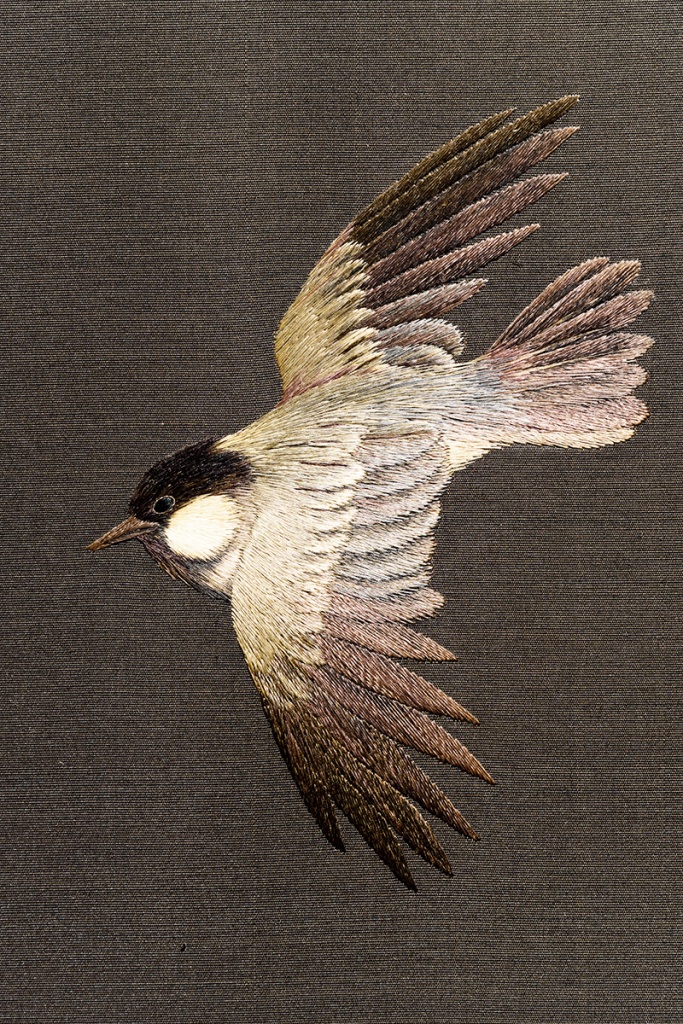
The autumn edition of our journal Asian Textiles has now been delivered to most members. Fittingly for this time of year there is a focus on scarves, with a short article on the wedding scarves of the Chuvash by Natalia Yurievna Kashpar.

There is also a much longer one on the kelaghayi of Azerbaijan by Maria Wronska-Friend. If you have been following us for a while you may remember I devoted an entire blog to these scarves in 2019. Michael Heppell has also written on Lampung, Tampan and Ibanic speakers, spurred on by an article by Georges Breguet in the previous edition.

The second annual Cotsen Textile Traces Global Roundtable takes place online on Wednesday 17 and Thursday 18 November and the subject this year is From India to the World. The first day is devoted to Embroidered Textiles, and the second to Painted and Printed Textiles. Each day there will be three panels, and they feature some stellar speakers including Sarah Fee, Ruth Barnes, Monisha Ahmed and Rosemary Crill. These events begin at 09:00 EST, which is 14:00 GMT. This means that OATG members with stamina can ‘attend’ these sessions before our own talk in the evening.
You can read full details of the programme, including abstracts, here and register for it here.

A reminder that the next OATG event will be on Thursday 18 November. This will be an online presentation by Luz van Overbeeke entitled Japanese Ornamental Textiles Through a Dealer’s Eyes. Luz specialises in ornamental textiles of the Meiji era and will discuss some of the most memorable textiles she has found over the years.
This talk will take place at 18:30 GMT and is free for OATG members. There is a small (£3) charge for non-members. Full details and registration here.

Thursday 18 November is certainly a busy day for textile lovers, as the Asian Civilisations Museum in Singapore is also holding an online event. Professor Giorgio Riello of the University of Warwick is the speaker and his subject is The Ambassador is Spoiling Us: Gifts and Material Diplomacy at the Courts of Siam and France at the End of the Seventeenth Century.
“In the pre-modern period (c. 1400-1800), gifts were at the core of the ceremonies that accompanied the formal reception of foreign ambassadors. Both in Asia and in Europe, the choreography of the reception of ambassadors was carefully staged. This was the case for the Eurasian ambassadorial exchange between the distant Kingdoms of Siam (Thailand) and France in the 1680s. The fame of this specific diplomatic cross-cultural episode is due to the quantities and value of the gifts presented by the Siamese ambassadors to the Court of France and viceversa by the French ambassadors sent to the court of Siam. This presentation argues that diplomacy should not be read only at the level of rulers, in this case between Phra Narai (r. 1656-88) and Louis XIV (r. 1643-1715). The examination of the gifts themselves shows a series of other actors, most notably the ambassadors, but also Jesuits, merchants and adventurers.” – ACM website
The talk begins at 11:00 UTC, which is 19:00 GMT. Full details, and a link to register, can be found here.

On Friday 19 November the Tang Center for Silk Road Studies at UC Berkeley will host a Zoom webinar. The speaker is Mariachiara Gasparini and her subject is Across the Qinghai-Tibetan Plateau: Sino-Sogdian Textiles Beyond the Main Silk Routes.
“In the 6th century, the circulation of silk and embroidered textiles with zoomorphic motifs, often enclosed in pearl medallions, influenced Eurasian art. Although they have been often mistaken as ‘Sasanian,’ these textiles originated between Sogdiana and the western regions of China. However, only after the Islamization of Central Asia in the 8th century did these weavings evolve into new structures, and floral motifs were widely used to embellish or substitute the initial pearl medallions. By examining a group of 8th-9th-century weavings, which have recently appeared on the art market, in this paper, I discuss differences and variations between early and later structures and iconographic motifs. I argue that the Sogdian and Turko-Mongol trade might have also occurred beyond the main Silk Routes across the Qinghai-Tibetan plateau.” – Mariachiara Gasparini
This talk begins at 14:00 PST, which is 22:00 GMT and registration is required.











